The MIF , an autonomous fund of the Inter-American Development Bank ( IDB ) that supports projects for small and microenterprises, will offer grants to finance the creation of small tourism business networks, train entrepreneurs in the region to offer high-quality services and market their services.
The MIF is working closely with The National Geographic Society and Ashoka Changemakers to launch a new call for proposals in the second quarter of the year. The MIF will seek proposals in several categories including ones that are related to tourism and climate change; information technology and market access; and the development of sustainable tourism in the Caribbean.
“Latin America and the Caribbean is one of world’s most culturally and environmentally diverse,’’ said Santiago Soler, who heads the sustainable tourism cluster at the MIF. “We want to help countries take full advantage of tourism in a way that will preserve their cultural heritage and environment while ensuring that small entrepreneurs run a profitable and high-quality business.”
Tourism accounts for 11 percent of the world’s gross domestic product, 7 percent of all job opportunities in Latin America and the Caribbean and it is among the top five sources for foreign currency for poor nations. It is a labor-intensive industry that offers an important opportunity to increase employment and reduce poverty, particularly among developing nations, Soler said.
The MIF began investing systematically on sustainable tourism in 2003 when it selected 25 projects in the region with the primary goal of improving competitiveness of business and developing or creating new tourism destinations in which small businesses and the local community could participate. Interest has been so strong from countries in the region that the MIF is now in the process of selecting new proposals. As many as 350 proposals were submitted in last’s year selected process, Soler said.
Over the past seven years, the MIF has financed a wide range of projects that helped improve the quality of services by small hotels in Mexico’s Tequila Trail destination, develop a sustainable supply of products for the tourism industry in Galápagos and create and market tourism destinations in Colombia and Brazil .
The MIF teams up with local partners, local governments, nongovernment organizations and industry groups, for example, to implement the project and offer training. Thanks to the project, small entrepreneurs learn tools that will allow them to improve the quality of their services and better manage their business and take advantage of networking to market each their services and products.
“Our role is to help plant the seed,” Soler said. “Our local and international partners, together with the local entrepreneurs and communities, have to ensure the work that has been done is preserved and expanded long after the IDB’s role has finished.”
Partnerships with corporations
During 2010 a special emphasis will be made to incorporate partners from the corporate world that are directly or indirectly related with the tourism sector. In February, the MIF organized a partnership summit at the National Geographic´s headquarters in Washington DC.
The event sought to narrow the gap between the development world, initiatives related to corporate social responsibility and corporate business strategies to identify commercial opportunities and achieve sustainable development, according to Soler.
“We are working closely with companies such as Microsoft, Amadeus, Google and Banco Bilbao Vizcaya Argentaria (BBVA), and we hope to have targeted competitions with active participation of selected corporate partners in 2010,” said Soler.
Winter is here! Check out the winter wonderlands at these 5 amazing winter destinations in Montana
- Travel Guide
- Sustainability

Where Is Ecotourism Practiced In Latin America?
Published: November 14, 2023
Modified: December 28, 2023
by Heath Dann
- Plan Your Trip
Introduction
Ecotourism is a growing trend in the travel industry, offering a sustainable and responsible way to explore and appreciate the natural wonders of our planet. Latin America, with its diverse ecosystems and rich biodiversity, has emerged as a prominent destination for ecotourism enthusiasts.
Ecotourism goes beyond traditional tourism by promoting conservation efforts, supporting local communities, and providing educational opportunities for travelers. It allows visitors to immerse themselves in the natural environment while minimizing their impact on fragile ecosystems.
Latin America boasts an abundance of ecotourism destinations, each offering unique experiences and opportunities to connect with nature. From dense rainforests and pristine beaches to towering mountains and vibrant coral reefs, this region is a treasure trove for eco-conscious travelers.
In this article, we will explore some of the top ecotourism destinations in Latin America, highlighting their sustainable practices and breathtaking natural attractions. Whether you are a nature lover, adventure seeker, or simply curious about conservation efforts, Latin America has something to offer for everyone.
Costa Rica is often hailed as a pioneer in ecotourism, and for good reason. This small Central American country is home to an incredible array of biodiversity and has made significant efforts to protect its natural resources.
One of the standout destinations in Costa Rica is the Monteverde Cloud Forest Reserve. This protected area is a haven for birdwatching enthusiasts, with over 400 species of birds, including the resplendent quetzal. Visitors can explore the reserve’s trails, suspension bridges, and canopy tours, immersing themselves in the misty cloud forest ecosystem.
The Tortuguero National Park is another highlight of Costa Rica’s ecotourism scene. Known as the “Amazon of Costa Rica,” this park is a vital nesting site for endangered sea turtles, including the green turtle and leatherback turtle. Travelers can witness these magnificent creatures laying their eggs on the beaches from March to October. The park also offers boat tours through its intricate maze of canals, allowing visitors to spot a variety of wildlife, such as caimans, monkeys, and colorful birds.
Arenal Volcano National Park is a must-visit destination for adventure seekers. The park is home to the iconic Arenal Volcano, which was once one of the world’s most active volcanoes. Visitors can trek through lava fields, take a dip in hot springs, and enjoy thrilling activities like ziplining and whitewater rafting.
Costa Rica also boasts a strong commitment to sustainable practices in its tourism industry. The country has set aside over 25% of its land as protected areas, ensuring the preservation of its valuable ecosystems. Many hotels and lodges in Costa Rica have implemented sustainable practices such as utilizing renewable energy, promoting waste reduction and recycling, and supporting local communities through employment and economic opportunities.
With its stunning natural landscapes and dedication to conservation, Costa Rica is a shining example of ecotourism done right. Visitors to this tropical paradise not only get to enjoy its beauty but also contribute to its preservation and the well-being of local communities.
Brazil, the largest country in South America, is a captivating ecotourism destination that boasts diverse ecosystems, from the mighty Amazon rainforest to the stunning Pantanal wetlands and the enchanting Atlantic Forest.
The Amazon rainforest, often referred to as the “lungs of the Earth,” is an ecological wonder that spans across nine countries, with the majority located in Brazil. It is a hotspot for biodiversity, housing countless species of plants and animals. Visitors can embark on guided tours and river cruises, allowing them to navigate through the maze of waterways and witness the fascinating wildlife, such as pink river dolphins, anacondas, and colorful macaws.
The Pantanal, the world’s largest tropical wetland, is a paradise for nature lovers and wildlife enthusiasts. This pristine ecosystem is home to an incredible variety of aquatic plants and animals. Visitors can embark on guided safaris, where they have the chance to spot jaguars, giant otters, capybaras, and a staggering number of bird species. The Pantanal also offers opportunities for fishing, horseback riding, and hiking in its vast expanse.
The Atlantic Forest, a UNESCO World Heritage site, is another gem in Brazil’s ecotourism repertoire. It is a biodiverse hotspot, home to endangered species, endemic plants, and stunning waterfalls. Visitors can explore trails, visit conservation projects, and engage in activities like birdwatching and wildlife photography.
Brazil has recognized the importance of preserving its natural resources and has implemented several initiatives to promote sustainable tourism. The country has established numerous national parks, reserves, and protected areas, providing opportunities for environmental education, research, and conservation. Additionally, many tour operators and accommodations in Brazil have adopted eco-friendly practices, such as using renewable energy, minimizing waste, and supporting local communities.
When visiting Brazil for ecotourism, it is essential to do so responsibly, respecting the fragile ecosystems and local cultures. By choosing certified eco-lodges and participating in community-based tourism initiatives, visitors can contribute to the conservation efforts and the well-being of local communities.
Brazil’s breathtaking landscapes and commitment to ecotourism make it an ideal destination for those seeking a deep connection with nature and a desire to make a positive impact.
Mexico, with its rich cultural heritage and diverse natural landscapes, is a captivating destination for eco-conscious travelers. From lush jungles to pristine beaches, Mexico offers a wide range of ecotourism experiences.
The Sian Ka’an Biosphere Reserve, located on the eastern coast of the Yucatan Peninsula, is a UNESCO World Heritage site and a shining example of Mexico’s commitment to conservation. This sprawling reserve is home to mangroves, wetlands, and coral reefs, providing habitat to a plethora of species. Travelers can explore the reserve through guided tours, hike through its dense jungles, float on Mayan canals, and even snorkel or dive in its crystal-clear waters to witness vibrant marine life.
The monarch butterfly biosphere reserves in central Mexico are also noteworthy ecotourism destinations. Every year, millions of monarch butterflies migrate from Canada and the United States to Mexico, where they hibernate in the forests. Visitors can witness this breathtaking natural phenomenon and learn about the conservation efforts to protect the delicate butterfly populations.
The Copper Canyon in the state of Chihuahua is a mesmerizing natural wonder that appeals to adventure seekers and nature enthusiasts. This vast system of canyons is larger and deeper than the famous Grand Canyon. Visitors can hike or take the scenic train ride through the canyon, marveling at its towering cliffs, cascading waterfalls, and unique flora and fauna.
Mexico is also home to picturesque coastal areas that embrace sustainable practices. Tulum, a popular beach destination, has become a hub for eco-friendly resorts and boutique hotels that prioritize environmental responsibility. Travelers can enjoy pristine beaches, explore cenotes (natural sinkholes), and visit nearby Mayan ruins while knowing that their visit supports sustainable tourism practices.
In recent years, the Mexican government has taken steps to promote sustainable tourism and protect its natural resources. Various programs focus on raising awareness about environmental conservation, supporting local communities, and preserving cultural heritage. Additionally, Mexico has established numerous protected areas, national parks, and reserves, ensuring the long-term preservation of its diverse ecosystems.
Mexico’s commitment to ecotourism, combined with its rich cultural heritage and breathtaking scenery, make it an enticing destination for travelers seeking an immersive and sustainable travel experience.
Peru is a country renowned for its ancient ruins, vibrant culture, and breathtaking natural landscapes. It is also becoming increasingly popular as an ecotourism destination, offering travelers a chance to explore diverse ecosystems and engage in sustainable practices.
The Peruvian Amazon is a biodiverse paradise and spans a significant portion of the country. Travelers can choose to embark on river cruises or stay in eco-lodges deep in the rainforest, immersing themselves in the sights and sounds of the jungle. Guided tours offer an opportunity to spot unique wildlife like the iconic jaguar, giant river otters, and various monkey species. Visitors can also learn about the local indigenous communities and their traditional knowledge of the rainforest.
Machu Picchu, one of the New Seven Wonders of the World, is a must-visit for anyone traveling to Peru. This ancient Inca city is nestled high in the Andes Mountains and offers breathtaking views of the surrounding valleys and peaks. While visiting Machu Picchu, travelers can choose to hike the famous Inca Trail, which combines stunning natural scenery with fascinating archaeological sites.
The Colca Canyon in southern Peru is another natural wonder that attracts eco-conscious travelers. This deep canyon is home to the Andean condor, one of the largest flying birds in the world. Visitors can witness these majestic creatures soar through the canyon and take in the awe-inspiring views of the rugged landscape.
Peru has implemented several initiatives to promote sustainable tourism practices. The country has established protected areas, national parks, and reserves to conserve its unique ecosystems. Efforts are also being made to involve local communities in tourism activities, ensuring that they benefit from the industry and have a stake in conservation efforts.
Peru’s commitment to preserving its natural resources extends to its culinary practices as well. With a rich culinary heritage, Peru embraces organic farming, traditional agricultural techniques, and a focus on utilizing local ingredients, such as quinoa, corn, and native fruits. Travelers can indulge in a farm-to-table experience, supporting sustainable food systems while enjoying delicious Peruvian cuisine.
Whether exploring the Amazon rainforest, marveling at ancient ruins, or appreciating the stunning landscapes, Peru offers a unique blend of cultural heritage and natural wonders that captivate eco-conscious travelers.
Ecuador, a small country located in the heart of South America, is a hidden gem for ecotourism enthusiasts. Blessed with diverse geography, from the soaring Andes Mountains to the pristine Galapagos Islands and the lush Amazon rainforest, Ecuador offers an abundance of natural beauty and wildlife.
The Galapagos Islands, a UNESCO World Heritage site, are a unique haven for wildlife lovers and nature enthusiasts. These volcanic islands are home to an incredible array of endemic species, including the iconic Galapagos tortoise, marine iguanas, blue-footed boobies, and Darwin’s finches. Visitors can explore the islands on eco-friendly cruises and guided tours, marveling at the untouched landscapes and engaging in activities like snorkeling and kayaking alongside curious sea lions and colorful fish.
The Ecuadorian Amazon rainforest is another incredible ecotourism destination. With vast expanses of dense jungle and winding rivers, it offers a chance to dive deep into nature. Visitors can stay in eco-lodges owned and operated by local indigenous communities, allowing for an immersive cultural and environmental experience. Guided hikes, canoe trips, and night safaris provide opportunities to spot fascinating wildlife, such as toucans, monkeys, sloths, and the elusive jaguar.
Ecuador is also home to the renowned Cotopaxi National Park, which surrounds the majestic Cotopaxi volcano. This park offers a range of outdoor activities, including hiking, mountain biking, and horseback riding. The surrounding highlands are also dotted with traditional indigenous villages, where visitors can learn about local customs, traditions, and traditional handicrafts.
In recent years, Ecuador has made great strides in promoting sustainable tourism practices. The country has established several protected areas and national parks, ensuring the preservation of its natural heritage. Many local tour operators and accommodations have adopted eco-friendly practices, such as waste management, renewable energy sources, and supporting local initiatives.
Furthermore, Ecuador’s government has recognized the importance of involving local communities in ecotourism activities. This approach helps to ensure that the benefits of tourism are shared with the people who live in the areas visited by travelers. By supporting community-based tourism initiatives, visitors not only contribute to the conservation of natural resources but also make a positive impact on the local economies and cultures.
Ecuador’s commitment to conservation, breathtaking landscapes, and cultural diversity make it a top choice for those seeking an unforgettable and sustainable ecotourism experience.
Colombia, a country known for its vibrant culture and stunning landscapes, is emerging as an exciting ecotourism destination. With its diverse ecosystems, ranging from lush rainforests to pristine coastlines, Colombia offers a wealth of opportunities for nature enthusiasts and sustainable travelers.
The Tayrona National Natural Park, located on the Caribbean coast, is a must-visit destination for eco-conscious travelers. This enchanting park is home to pristine beaches, crystal-clear waters, and dense tropical forests. Visitors can hike through the park’s trails, spot exotic bird species, and even camp on the secluded beaches. While enjoying the park’s natural beauty, it’s essential to respect the fragile ecosystems and follow responsible tourism practices.
The Amazon rainforest in Colombia is a biodiverse paradise, teeming with wildlife and unique flora. Travelers can choose to explore the jungle’s remote and untouched areas by embarking on guided tours and experiencing life in indigenous communities. These tours often focus on educating visitors about indigenous cultures, traditional medicinal plants, and sustainable practices for living in harmony with nature.
The Cocora Valley in the Coffee Triangle region is another gem of Colombia’s ecotourism offerings. This picturesque valley is famous for its towering wax palm trees, the national tree of Colombia and one of the tallest palm species in the world. Hiking through the valley allows visitors to marvel at the stunning landscapes and admire the endemic wildlife that calls this region home.
Colombia has also made significant efforts to protect its natural heritage. The country has established a network of national parks and protected areas, encompassing a wide range of ecosystems. These initiatives help preserve Colombia’s unique biodiversity and offer opportunities for sustainable tourism practices.
Moreover, the Colombian government has been actively promoting community-based tourism initiatives, aiming to involve local communities in tourism activities and ensure they benefit from the industry. Travelers can support these initiatives by staying in eco-lodges owned by local communities, participating in cultural exchanges, and engaging in sustainable activities that support the local economy.
Colombia’s commitment to sustainable tourism, combined with its rich biodiversity and cultural heritage, make it an enticing destination for eco-conscious travelers seeking a unique and immersive experience in nature.
Guatemala, located in the heart of Central America, is a treasure trove of natural wonders and rich indigenous culture. With its diverse landscapes, including volcanoes, rainforests, and ancient ruins, Guatemala offers a unique and immersive ecotourism experience.
The Tikal National Park is a UNESCO World Heritage site and one of the most iconic archaeological sites in Guatemala. Nestled in the heart of the Maya Biosphere Reserve, Tikal is home to towering ancient Mayan pyramids, temples, and palaces. Visitors can explore the extensive ruins and witness an abundance of wildlife, including howler monkeys, toucans, and jaguars, in this dense rainforest setting.
Lake Atitlán is another natural gem in Guatemala, situated in the Western Highlands. Surrounded by picturesque volcanoes and traditional Mayan villages, the lake offers stunning panoramic views and a tranquil atmosphere. Visitors can hike along the lake’s shores, kayak on its calm waters, and immerse themselves in the vibrant indigenous culture and handicrafts of the nearby villages.
The Guatemalan cloud forests, such as the Sierra de las Minas Biosphere Reserve and the Biotopo del Quetzal, are biodiverse regions known for their lush vegetation and unique wildlife. Travelers can experience guided hikes through misty forests, birdwatching excursions to spot the resplendent quetzal, and educational programs on the conservation efforts in place to protect these delicate ecosystems.
Guatemala has made strides in promoting sustainable tourism practices and protecting its natural resources. The country has established a network of national parks and protected areas, such as the Maya Biosphere Reserve and the Chiquibul National Park, ensuring the preservation of its diverse ecosystems. Additionally, local communities have been involved in eco-tourism initiatives, offering accommodations, guide services, and community-based tours that embrace sustainable practices and provide economic benefits to the local population.
It is important for visitors to be mindful of their impact on the local environment and culture when exploring Guatemala. Choosing eco-friendly accommodations, supporting local businesses, and respecting cultural traditions are essential steps towards responsible and sustainable tourism.
Guatemala’s natural beauty, cultural heritage, and commitment to sustainable tourism make it an ideal destination for eco-conscious travelers seeking authentic experiences in a captivating setting.
Argentina, the land of tango and gauchos, is also a remarkable destination for ecotourism. With its vast and diverse landscapes, from the towering Andes Mountains to the expansive wetlands of the Iberá, Argentina offers a wealth of natural wonders for visitors to explore.
One of the most iconic destinations in Argentina for ecotourism is the Perito Moreno Glacier in Los Glaciares National Park. This immense glacier is one of the few in the world that is still advancing. Visitors can witness the awe-inspiring spectacle of ice calving into the turquoise waters below or take guided walks on the glacier itself.
For those interested in wildlife, the Valdes Peninsula is a must-visit. This UNESCO World Heritage site is a haven for marine mammals, including southern right whales, sea lions, and Magellanic penguins. Visitors can embark on boat tours to see these animals up close, or witness the incredible sight of orcas hunting seals along the shore.
The Iguazu Falls, located in the subtropical rainforest shared by Argentina and Brazil, is a true natural wonder of the world. With its massive cascades and lush surroundings, this UNESCO World Heritage site offers opportunities for hiking, birdwatching, and boat tours, allowing visitors to appreciate the power and beauty of nature.
Argentina is also home to the mesmerizing landscapes of Patagonia. The Nahuel Huapi National Park, located in the Lake District, offers scenic beauty with its crystal-clear lakes, snow-capped mountains, and vast forests. It is an ideal destination for hiking, kayaking, and wildlife spotting, with a chance to encounter Andean condors and guanacos.
When it comes to sustainability, Argentina has made efforts to protect its natural resources and promote responsible tourism. Many of the national parks and protected areas have implemented visitor quotas and regulations to minimize the impact on fragile ecosystems. Eco-lodges and sustainable accommodations can be found in various regions, providing eco-friendly options for visitors looking to reduce their carbon footprint.
By choosing to visit these ecotourism destinations and practicing responsible travel habits, visitors can contribute to the conservation efforts and support the local communities that rely on sustainable tourism in Argentina.
Argentina’s diverse landscapes, commitment to conservation, and rich biodiversity make it an ideal destination for eco-conscious travelers seeking memorable and sustainable experiences in nature.
Chile, a country of striking landscapes and natural wonders, holds great appeal for eco-conscious travelers. From the vastness of the Atacama Desert to the pristine beauty of Patagonia, Chile offers a wide range of ecotourism experiences.
The Torres del Paine National Park, located in the southern region of Patagonia, is a highlight of Chile’s ecotourism offerings. This UNESCO Biosphere Reserve is renowned for its dramatic granite peaks, glaciers, and turquoise lakes. Visitors can embark on hiking expeditions, horseback rides, or kayak trips, immersing themselves in the untouched beauty of the park while encountering unique wildlife, such as guanacos and Andean condors.
The Chilean Lake District, with its snow-capped volcanoes, lush forests, and crystal-clear lakes, is another paradise for nature lovers. This region offers opportunities for hiking, kayaking, and birdwatching. Visitors can explore the majestic landscapes of the Villarrica National Park, cruise through the fjords of the Aysén region, or relax in the natural hot springs of Puyuhuapi.
Chile is also home to the mystical Easter Island, known for its iconic moai statues and rich Polynesian heritage. Visitors can learn about the island’s unique culture and explore the ancient archaeological sites, while also enjoying its pristine beaches and diverse marine life through snorkeling and diving.
Furthermore, Chile is at the forefront of sustainability practices. The country is committed to protecting its natural resources and has established numerous national parks, reserves, and protected areas that preserve its diverse ecosystems. Many hotels and lodges in Chile have implemented sustainable practices, such as using renewable energy, practicing waste reduction, and supporting local communities through employment and education.
Chile’s commitment to responsible tourism extends to its culinary scene as well. Visitors can savor delicious seafood and traditional dishes made with fresh, locally sourced ingredients. Sustainable fishing practices and farm-to-table experiences are emphasized, supporting the conservation of marine and terrestrial resources.
By visiting Chile and engaging in sustainable tourism practices, travelers can not only experience the country’s breathtaking landscapes and vibrant culture but also contribute to the preservation of its natural heritage and the well-being of local communities.
Chile’s natural wealth and dedication to sustainability make it an ideal destination for eco-conscious adventurers seeking unforgettable experiences in harmony with nature.
Latin America is a treasure trove of ecotourism destinations, offering incredible natural beauty, rich biodiversity, and a commitment to sustainable practices. From the dense jungles of Costa Rica to the majestic glaciers of Argentina, this diverse region has something to offer for every eco-conscious traveler.
Throughout Latin America, countries have established protected areas, national parks, and reserves to safeguard their natural resources. Many of these destinations provide opportunities for immersive experiences, where visitors can hike through pristine forests, witness unique wildlife, and learn about the importance of conservation.
Efforts have also been made to involve local communities in the ecotourism industry, ensuring that they benefit from the economic opportunities while preserving their cultures and traditional practices. By supporting community-based tourism initiatives, travelers can contribute to the well-being of local residents and their preservation of cultural heritage.
Moreover, Latin American countries have increasingly embraced sustainable tourism practices. Eco-lodges and eco-friendly accommodations are available, utilizing renewable energy, minimizing waste, and supporting local economies. Responsible travelers can reduce their environmental footprint by choosing these sustainable accommodations, practicing Leave No Trace principles, and supporting local businesses that prioritize environmental and social responsibility.
Latin America’s commitment to ecotourism not only benefits travelers but also contributes to the long-term conservation of ecosystems, preservation of biodiversity, and the well-being of local communities. Through responsible travel, visitors have the opportunity to appreciate the beauty of nature, support conservation efforts, and create meaningful connections with the cultures and people of Latin America.
Whether it’s exploring the lush rainforests of the Amazon, witnessing the majesty of glaciers, or immersing in indigenous cultures, Latin America offers a wealth of experiences for those seeking to explore the wonders of the natural world in a sustainable and respectful manner.

- Privacy Overview
- Strictly Necessary Cookies
This website uses cookies so that we can provide you with the best user experience possible. Cookie information is stored in your browser and performs functions such as recognising you when you return to our website and helping our team to understand which sections of the website you find most interesting and useful.
Strictly Necessary Cookie should be enabled at all times so that we can save your preferences for cookie settings.
If you disable this cookie, we will not be able to save your preferences. This means that every time you visit this website you will need to enable or disable cookies again.
We use cookies
Caf leads support for sustainable tourism development in the caribbean.
February 16, 2023
The Development Bank of Latin America and the Caribbean (CAF) is embarking on a new programme to promote sustainable and regenerative tourism development and to strengthen regional integration and regional cooperation through tourism. CAF, which recently opened its Regional Office for the Caribbean in Port-of-Spain, Trinidad and Tobago, stands ready to support its member countries and other CARICOM member states in achieving their sustainable development goals.

CAF is placing significant emphasis on a new portfolio of services linked to tourism and adopting an approach that focuses on the sustainable development and resilience of the sector. While tourism contributes to a large portion of the Gross Domestic Product (GDP) in Caribbean economies, the industry is highly sensitive to climate change and the impacts of extreme weather events. It can, at the same time, be a contributor to some of the negative effects on the environment, if not properly managed.
“Placing the spotlight on resilience as a pivotal aspect of tourism is essential for sustainable tourism development and this will require increased investment. CAF is committed to serving as the Green Bank of Latin America and the Caribbean and the Bank that will help to drive the reactivation of economies across the region,” asserted CAF’s Regional Director for the Caribbean, Stacy Richards-Kennedy, at the Global Tourism Resilience Conference held in Kingston .
Through its Regional Office for the Caribbean, CAF is increasing support for a new form of tourism in CARICOM countries that will play a vital role in protecting the environment and local culture. These, according to CAF, are essential for tourism activity since it is an industry that is vulnerable to the effects of external and internal shocks such as economic, health, social, political and climate crises. CAF’s action strategy includes strengthening tourism as a key sector to improve living conditions in tourism destinations, generating economic and employment opportunities and serving as a catalyst for enhancing cultural heritage and the environment.
Richards-Kennedy added, “Our member countries proudly recognize CAF as being very agile, client-focused and flexible in our approaches to work and in supporting their development priorities. We are excited to promote greater regional cooperation within the Caribbean and also between Latin America and the Caribbean, while contributing to advancing sustainable, resilient and regenerative tourism approaches.”
CAF is a development bank that was established in 1970, aimed at promoting sustainable development and regional integration projects through credit operations, grants, knowledge to inform public policies as well as support in the technical and financial structuring of projects in the public and private sectors of Latin America and the Caribbean. It is a bank that is owned by Latin America and the Caribbean for Latin America and the Caribbean. Jamaica has been a shareholder country of CAF since 1999.
Latest news:
The deadline for the regional brand call has been extended to april 30.
April 26, 2024
The Annual CAF Conference will center on security in the Americas
April 23, 2024
Everything you should know about the Regional Brand call
April 22, 2024

South America
Travel guide.
- Things to Do
- Tips on Accommodations
- Sustainable Travel & Ecotourism
- Calendar of Events
- Health & Safety
- Health & Insurance
- Tips for Families
- Tips for Gay and Lesbian Travelers
- Entry Requirements & Customs
- Tips for Senior Travelers
- Getting Around
- Tips for Student Travelers
- Tips for Travelers with Disabilities
- Tips for Women Travelers
- Staying Connected
- Active Pursuits
- A Nature Guide
Sustainable Travel & Ecotourism in South America
South America is one of the planet's prime ecotourism destinations. Many of the isolated nature lodges and tour operators around the country are pioneers and dedicated professionals in the ecotourism and sustainable tourism field. Many other hotels, lodges, and tour operators are simply "green-washing," using the terms "eco" and "sustainable" in their promo materials, but doing little real good in their daily operations. Responsible Travel (www.responsibletravel.com) is a great source of sustainable travel ideas with listings on South America; the site is run by a spokesperson for ethical tourism in the travel industry. Sustainable Travel International (www.sustainabletravelinternational.org) promotes ethical tourism practices, and manages an extensive directory of sustainable properties and tour operators around the region.
Deforestation is the main threat to South America's fragile ecosystem. Farming has virtually wiped out most of the region's rainforests, and logging is a major threat. Such destruction has been devastating to many species, including man himself, in the form of displaced indigenous tribes, and has led to drinking-water shortages, flash flooding, and mud slides. Though environmental awareness is growing, solving the region's huge environmental problems, including not just deforestation but the effects of overpopulation and industrial pollution, clearly remains an uphill struggle. Your hotel will often be your best bet for finding a place to deposit recyclable waste, especially if you choose a hotel that has instituted sustainable practices.
Volunteer travel has become increasingly popular among those who want to venture beyond the standard group-tour experience to learn languages, interact with locals, and make a positive difference while on vacation in South America. Volunteer options are listed under "Special-Interest Vacations," below.
Gold mining in San Juan, soya planting in El Chaco, global warming in South Patagonia, and pulp milling on the River Plate are all hot environmental issues in Argentina at the moment. Despite having one of the best national park systems in the region, the country's protected areas are under threat from encroaching development.
On the bright side is a growing awareness amongst the populace that they are in danger of losing what they have. A forest preservation law was introduced in 2007 prohibiting deforestation, and Mendoza's provincial congress issued a blanket ban on mining, though it was later overturned by the governor. Argentina's main weapon against environmental damage is its utter vastness and underpopulation, yet lax government control, little tradition for conservation, and rampant development are all cause for concern.
Bolivia, one of the world's most biodiverse countries on earth, is home to 60 protected areas, including 22 national parks, which covers an impressive 15% of its total territory. Many of the protected areas, however, are in constant threat from oil companies and loggers, who seemingly avoid any crackdowns from the government. The extraction of the significant lithium reserves in southwest Bolivia had led to frequent protests around Uyuni, but thus far they remain untapped. Natural gas reserves, once a significant source of revenue for Bolivia, have lost their value; as buyers in neighboring countries turn elsewhere, new explorations have come to a halt.
Only a few hotels have jumped on the green train in Bolivia thus far, including La Posada del Inca on Isla del Sol and Chalalan Ecolodge in Madidi National Park.
Brazilian resorts and tour operators do advertise "ecotourism," but in Brazil this means anything that takes place in the outdoors, be it leave-only-footprints nature hikes or churn-up-the-wildlife ATV expeditions. It does not signify lodges or hotels with solar heating or clever ways of dealing with waste water, or even outdoor operators that take particular care of their local ecosystems.
In Brazil's two most vulnerable remaining ecosystems -- the Pantanal and the Amazon -- there are tourism operators who strive to protect their local ecosystems. In the Pantanal the Araras Eco Lodge and the Jaguar Ecological Reserve have helped to popularize the private ecological reserve, a Brazilian program through which the government provides tax breaks in return for a landowner committing to preserving a portion of his in perpetuity. The presence of ecotourism operators in the Pantanal has also provided a lobby to counter certain ill-advised development schemes, including the paving of the Transpantaneira highway, and the widening, straightening, and deepening of the Rio Paraguay, the better to transport soybeans to the coast.
In the Amazon, the Pousada Uakarí serves as an integral part of the Mamiraua Sustainable Development Institute (www.mamiraua.org.br), a project designed to preserve the habitat of the Uakarí monkey while improving the living standards of local human populations living in and around the Uakarí reserve. Other Amazon lodges come nowhere near this standard, though they do provide some local employment for guides and other lodge staff. Unfortunately, the miniscule scale of ecotourism operations in comparison with the employment and revenues generated by the timber and cattle industries has rendered ecotourism a nonplayer in the debate over preserving the Amazon.
However, one could argue that those who experience the Amazon become more likely to lobby to save it. Certainly, awareness of the importance of the Amazon, both globally and in Brazil, has led to the passage in Brazil of a range of reasonably stringent preservation measures, including parks, reserves, Indian reservations, national forest lands, and restrictions on deforestation on private landholdings. The problem in Brazil is that these regulations are often not respected, while enforcement on the ground remains weak. Still, rates of deforestation in the Brazilian Amazon have declined, from a 2004 peak of 27,400 sq. km (16,686 sq. miles, an area somewhat larger than Vermont) to 12,911 sq. km (5,035 sq. miles, an area somewhat smaller than Connecticut) in 2008.
The principal environmental problems that confront Chile are deforestation and air, water, and land pollution. Santiago is one of Latin America's most polluted cities, and air pollution there has become an acute problem; children and the elderly and infirm are frequently advised to stay indoors for days on end due to dangerous levels of toxic pollutants that enshroud the capital. Rapid urban expansion, industrial emissions from the copper mining sector, and the increased volume of car traffic are cited as the main causes of Santiago's air pollution. Mining is responsible for releasing the chief air and water pollutants, including sulfur dioxide and arsenic. In 2000, the city faced an unprecedented pollution emergency when over 200,000 vehicles were prohibited from driving on the roads and offending industries were shut down. Fortunately, in the last few years, environmental issues have taken a more prominent role in domestic politics and, while the pace is slow, government initiatives have gone a long way to improving the situation.
The indiscriminate logging of Chile's temperate forests has resulted in the tragic disappearance of thousand-year-old forests. The most publicized case of illegal logging, which has been taken up by environmental agencies, including Greenpeace, is that of the rare alerce tree, which is found in the Andes and can live for up to 3,500 years. Many animals are in serious risk of extinction throughout the country, as well. As of 2001, of the 91 listed mammals in Chile, some 16 species were registered as endangered. Almost 5% of Chile's 298 breeding bird species are threatened with extinction, most notably the tundra peregrine falcon, the Chilean woodstar, and the ruddy-headed goose. Also threatened are four types of freshwater fish and over 250 plant species.
Chile hasn't made great strides in the sustainable accommodations arena, although eco-conscious lodges are popping up in Patagonia and the Lake District.
Colombia is facing significant environmental risks. At the current rate of deforestation, experts estimate that Colombia's jungles will completely disappear by the year 2050. The logging, mining, gold, and emerald trade, as well as the illicit coca trade, has caused massive deforestation at a rate of 1.5 to 2 million acres a year. Mountain scraping for farming has caused previously forested and vegetated areas to turn into semi-arid desert zones, and road and home construction in rural areas is threatening the country's biodiversity. In addition, improperly disposed sewage, pesticides, and herbicides have contaminated many of the country's rivers and lakes, making the water undrinkable. Factory and car pollution continues to be a major problem in cities.
Oil exploration and mining operations continue to be the biggest environmental threats in Ecuador. In addition to impacting the environment, these activities also impact a variety of indigenous groups, whose way of life, culture, and ancestral homelands are severely threatened. This has led to numerous protests, and sometimes violent clashes between indigenous groups and the government. The Galápagos Islands present their own special set of challenges in terms of environmental protection and sustainable development issues. Isolated, unique, and delicate, the Galápagos are threatened by overexposure to tourists, over fishing, and the introduction of non-native species.
Deforestation is the main concern in Paraguay, as big agro-businesses come from Brazil and Argentina to clear forests and plant genetically modified plants. On paper the country has an impressive list of parks and reserves, but because of poor public access, underfunded government bodies, and corrupt local officials, it seems the only people that get to enter these biologically diverse areas are ranchers and lumber companies.
Peru has 72 million hectares (178 million acres) of natural-growth forests -- 70% in the Amazon jungle region -- that comprise nearly 60% of the national territory. Peru has done a slightly better job of setting aside tracts of rainforest as national park reserves and regulating industry than have some other Latin American and Asian countries. The Manu Biosphere Reserve, the Tambopata National Reserve, and the Pacaya-Samiria National Reserve are three of the largest protected rainforest areas in the world, and the government regulates entry of tour groups. Peru augmented the Bahuaja-Sonene National Park, which was created in 1996, by 809,000 hectares (nearly 2 million acres) in 2001. INRENA, Peru's Institute for Natural Resource Management, enforces logging regulations and reseeds Peru's Amazon forests, and in 2008, President Alan García created the country's first Ministry of the Environment. A handful of Peruvian and international environmental and conservation groups, such as ProNaturaleza and Conservation International, are active in Peru, working on sustainable forestry projects.
Yet Peru is losing nearly 300,000 hectares (740,000 acres) of rainforest annually. The primary threats to Peru's tropical forests are deforestation caused by agricultural expansion, cattle ranching, logging, oil extraction and spills, mining, illegal coca farming, and colonization initiatives. Deforestation has shrunk territories belonging to indigenous peoples and wiped out more than 90% of the population. (There were once some six million people, 2,000 tribes and/or ethnic groups, and innumerable languages in the Amazon basin; today the indigenous population is less than two million.) Jungle ecotourism has exploded in Peru, and rainforest regions are now much more accessible than they once were, with more lodges and eco-options than ever. Many are taking leading roles in sustainable tourism even as they introduce protected regions to more travelers.
Uruguay is often called the most European country in South America, not least because most of its natural forests have been cleared for agriculture and there is little or nothing left of large wildlife indigenous to the region. The few nature reserves that exist offer little out of the ordinary, though there are some seal colonies worth visiting along the coast. The hot environmental issue at the moment is a dispute with Argentina over two massive pulp mills built on the Uruguayan side of the River Plate, which are badly polluting the riverway. The Uruguayans have denied this claim.
Since over 90% of Venezuela's population lives in a narrow urban belt along the northern coast, much of the interior is seldom visited and oft forgotten. Still, Venezuela has the third-highest rate of deforestation in South America, and the country's oil industry has caused massive environmental destruction in the Lake Maracaibo area, and to a lesser extent in Los Llanos. Gold, iron, bauxite and coal mining operations have also had a negative impact on the environment. That said, Venezuela has the largest percentage of protected land, with some 55% of its total territory protected in some form or another.
Note : This information was accurate when it was published, but can change without notice. Please be sure to confirm all rates and details directly with the companies in question before planning your trip.

- All Regions
- Australia & South Pacific
- Caribbean & Atlantic
- Central & South America
- Middle East & Africa
- North America
- Washington, D.C.
- San Francisco
- New York City
- Los Angeles
- Arts & Culture
- Beach & Water Sports
- Local Experiences
- Food & Drink
- Outdoor & Adventure
- National Parks
- Winter Sports
- Travelers with Disabilities
- Family & Kids
- All Slideshows
- Hotel Deals
- Car Rentals
- Flight Alerts
- Credit Cards & Loyalty Points
- Cruise News
- Entry Requirements & Customs
- Car, Bus, Rail News
- Money & Fees
- Health, Insurance, Security
- Packing & Luggage
- -Arthur Frommer Online
- -Passportable
- Road Trip Guides
- Alaska Made Easy
- Great Vacation Ideas in the U.S.A.
- Best of the Caribbean
- Best of Mexico
- Cruise Inspiration
- Best Places to Go 2024
Eco-tourism in Latin America

- Collections
- Mission & Team
- Work With Us
Coastal Fortifications: a Cultural Link Between Europe and the Caribbean for Sustainable Tourism
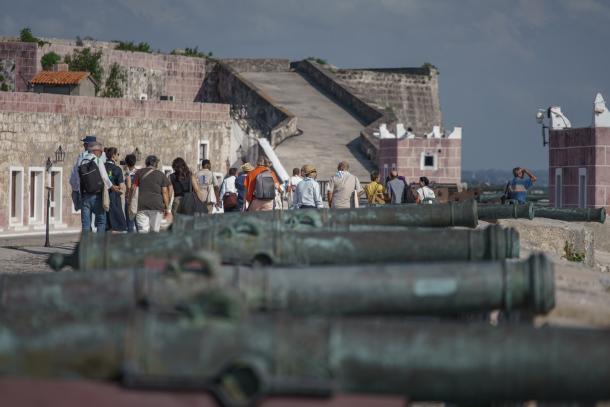
Coastal fortifications, built over thousands of years with complex designs, not only hold historical and cultural value but also play a crucial role in the socio-economic development of local communities, especially when integrated into the tourism offer. These structures represent a common heritage between Europe and the Caribbean, with architectural styles, engineering techniques and strategic importance that highlight their shared legacy.
To explore how these fortifications can contribute to sustainable development and how their inclusion in the tourism offer can generate significant economic and social benefits, the UNESCO programme Transcultura: Integrating Cuba, the Caribbean, and the European Union through Culture and Creativity , funded by the European Union, organized the workshop ‘World Heritage Coastal Defence Systems in the Caribbean and Europe,’ from 23 to 25 April 2024, in Havana. The city, home to the UNESCO World Heritage property 'Old Havana and its Fortifications System,' served as the venue for the event. The workshop was attended by more than 70 managers of European and Caribbean coastal fortifications, cultural authorities and tourism sector officials, as well as specialists and entrepreneurs.
I am pleased that this workshop has created a bridge for exchange on this shared heritage between the European Union and the Caribbean. The fact that spaces like this serve to create collaborative networks is the best legacy that Transcultura can leave.
Through lectures, presentations of experiences, round tables, thematic panels, debate groups, and technical visits, participants identified economic activities that could expand opportunities for young cultural professionals by linking creative products and services with the international tourism market. Among the topics discussed were the new uses of fortifications as cultural resources for sustainable development without endangering their Outstanding Universal Value, the impacts of climate change on tourism and disaster risk management, as well as community participation.
International experience has shown that including fortifications in the tourism offer contributes to generating jobs and increasing income. With the recovery of tourism after the impacts of the global pandemic, it is crucial to move towards more sustainable and resilient tourism, and creativity has become a fundamental tool to achieve this purpose’.
Furthermore, the participants debated about the creation of an ‘interregional cultural corridor’ of coastal defence systems in the Caribbean and Europe. This aims to enhance and safeguard the heritage attributes of these fortifications while promoting interest in Caribbean destinations.
The fortifications were not only designed to defend the city, but also to deter attacks, projecting a sense of impregnability. Although the relationship between the war world and fortifications can be difficult to explain, these structures possess inherent values - technological, territorial, landscape, and human - that were crucial in their time and constitute the cultural legacy of an era.
In parallel with this event, the workshop ‘Entrepreneurship and Cultural Heritage Tourism: Exploring Opportunities and Challenges at World Heritage properties’ took place, with creative entrepreneurs from 6 Caribbean countries, aiming to raise awareness and strengthen their capacities for the conservation and promotion of these sites, on which their businesses largely depend.
An exhibition fair with 24 enterprises (17 from Cuba and 7 from the Caribbean) served as the culmination of both workshops at the Castillo de la Real Fuerza in Havana. This event was an example of one of the uses that can be given to these spaces and served as a showcase for the diversity of creative projects linked to World Heritage properties.
Related items
- Programme implementation
- UN & International cooperation
- Country page: Antigua and Barbuda
- Country page: Bahamas
- Country page: Barbados
- Country page: Belize
- Country page: Cuba
- Country page: Dominica
- Country page: Dominican Republic
- Country page: Grenada
- Country page: Guyana
- Country page: Haiti
- Country page: Jamaica
- Country page: Montserrat
- Country page: Saint Kitts and Nevis
- Country page: Saint Lucia
- Country page: Saint Vincent and the Grenadines
- Country page: Suriname
- Country page: Trinidad and Tobago
- Region: Latin America and the Caribbean
- UNESCO Office in Havana and Regional Bureau for Culture
- UNESCO Office in Kingston
- UNESCO Office in Port-au-Prince
- UNESCO Office in Brussels
- Partners: European Union
- SDG: SDG 8 - Promote sustained, inclusive and sustainable economic growth, full and productive employment and decent work for all
- SDG: SDG 11 - Make cities and human settlements inclusive, safe, resilient and sustainable
- SDG: SDG 17 - Strengthen the means of implementation and revitalize the global partnership for sustainable development
- See more add
This article is related to the United Nation’s Sustainable Development Goals .

Other recent news
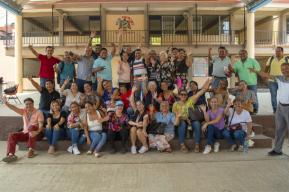
UN Tourism | Bringing the world closer
Reto de innovación en proyectos verdes.
Transforming the Tourism Sector in Latin America and the Caribbean
Powered by:


THE CHALLENGE
UN Tourism and the Development Bank of Latin America and the Caribbean (CAF) join forces in a momentous initiative to enhance the transformative impact of tourism, with a central focus on Green Projects. Our objective is to revitalize the industry by promoting innovation with a significant impact on sustainable infrastructure, reducing emissions and waste, but also in the social sphere, promoting rural and community tourism and generating new tourist experiences, all catalyzed by green projects in the sector.
In a dynamic world tourism scenario, we face a world where travelers' expectations are rapidly evolving, tourism is calling for innovation to create tourist experiences that are not only memorable but also transform the way the world is explored. In this changing context, entrepreneurs and tourism companies must seek to exceed travelers' expectations by applying new ideas and technologies.
Revealing the Challenge:
The relevance of this Challenge is highlighted by recognizing tourism as an essential driving force in the global economy and, more specifically, in the UN Tourism Region of the Americas, including Latin America and the Caribbean. During the period from January to July 2023, arrivals to the Americas reached 87% of 2019 levels, evidencing the resilience of the region 1 . Additionally, it is worth noting that for Foreign Direct Investment (FDI) trends in the tourism sector in Latin America, according to the most recent report by UN Tourism in collaboration with fDi Intelligence of the Financial Times, between 2018 and 2022, 340 FDI projects in tourism were announced in the region, with a capital investment that amounts to USD 27.9 billion 2 .
In this sense, innovation is relevant in the tourism sector to contribute to the transformation of the economy of rural communities and thus, in the same way, contribute to the reduction of emissions caused by the change in land use.
This Challenge seeks to support startups, enterprises, tourism companies, new entrepreneurs that promote through innovative projects, ensure the conservation and regeneration of the ecosystems and biodiversity of Latin America and the Caribbean to redefine how tourism can generate a positive impact, also having in mind that today tourists favor these offers when making their decisions about the destinations to visit.
The Challenge aims to strengthen the role of tourism in addressing local problems and to commit to greater ventures based on economic, social, and environmental sustainability.
1 UN Tourism Barometer 2 fDi Intelligence Financial Times and UN Tourism (2023), Tourism Investment 2023 – Global greenfield investment trends in tourism, fDi Insights: https://www.fdiinsights.com/fdi/fditourism2023 [29-11-2023].
Green Projects: This challenge is focused on startups, new entrepreneurs, and tourism companies that lead green project initiatives. Innovative projects are expected to contribute to sustainability and regeneration in all its pillars.
Specific working areas:
- Innovation that generates environmentally responsible and low-carbon tourism: Innovative solutions that contribute to the significant reduction of environmental impact and reduction of greenhouse gas emissions through waste management, energy efficiency, renewable energy generation; and initiatives that promote the design and development of tourist infrastructure in a sustainable and environmentally friendly manner, through technology and innovation, among others.
- Innovation that generates tourism resilient to Climate Change: Projects that address social protection and the impact of climate change in the tourism sector, seeking equitable and resilient solutions.
- Innovation conservation of protected areas through tourism: Projects that in some way contribute to the conservation of National Natural Parks, Biosphere Reserves, World Geoparks, Ramsar Sites, and areas designated for the conservation of migratory species of wild animals.
- Innovation for the regeneration of ecosystems and their biodiversity in tourist destinations: Projects that in some way contribute to the restoration of ecosystems through the tourist experience.

TARGET MARKET AND REQUIREMENTS
The objective of the contest is to especially attract the attention of startups, entrepreneurs, tourism agencies, and operators with a presence in Latin America and the Caribbean that are focused on social and environmental impact.
Entrepreneurs, startups, tourism companies, and organizations that meet the following requirements can apply:
- They have an innovative/disruptive nature and offer sustainable and value-added solutions for the tourism sector;
- Leveraging new technologies and innovative solutions, especially in the context of the blue and green economies;
- Have the ability to offer positive impact indicators in the context of the blue and green economies;
- Have potential for growth, scalability, and application in the region;
- Have a minimum viable product or project that is ready to be developed and funded;
- Have a structured business plan;
- Have a market study that justifies the business plan.
- Opportunity to present your solution at the UN Tourism Tech Adventures: Green Projects
- USD 10,000 investment offered by CAF for the winner
- Mentoring and support from UN Tourism and top-level partners
- Personalized support for the company
- Scholarship opportunities for the UN Tourism Online Academy
- Be a member of the UN Tourism Innovation Network through which they will have continuous support and opportunities to participate in UN Tourism projects and events
About Innovation at UN Tourism:
UN Tourism believes that innovation is the key to achieving the United Nations Sustainable Development Goals by 2030. To drive the digitalization of tourism, create an Innovation and Entrepreneurship Ecosystem that will maximize the potential of the sector in terms of economic growth, job creation, and sustainable development, and anticipate, address and overcome the new challenges and trends of the tourism sector, in 2018 UN Tourism developed a framework for Innovation, Education, Digital Transformation and Investments.
The IEI Department already launched 23 global, regional, and specific challenges, and 21 Tourism Tech Adventures (Innovation Forums) in 14 countries were held, with an additional 8 online editions. Total funding of 214 + USD million has been gathered for the UN Tourism Top Startups
Acerca de la CAF:
La CAF es el banco de desarrollo comprometido con mejorar la calidad de vida de todos los latinoamericanos y caribeños. Sus acciones promueven el desarrollo sostenible y la integración regional. Apuntan a convertirse en el Banco verde y azul, y el de la reactivación económica y social de la región.
Ofrecen asesoramiento y apoyo financiero a los sectores público y privado de sus países accionistas. Además, generan conocimiento para fortalecer las políticas públicas en América Latina y el Caribe y mejorar la calidad y el impacto de los proyectos que impulsan.
Related links:
Previous UN Tourism startup competitions CAF Términos y Condiciones
Best Ecotourism Destinations In Latin America
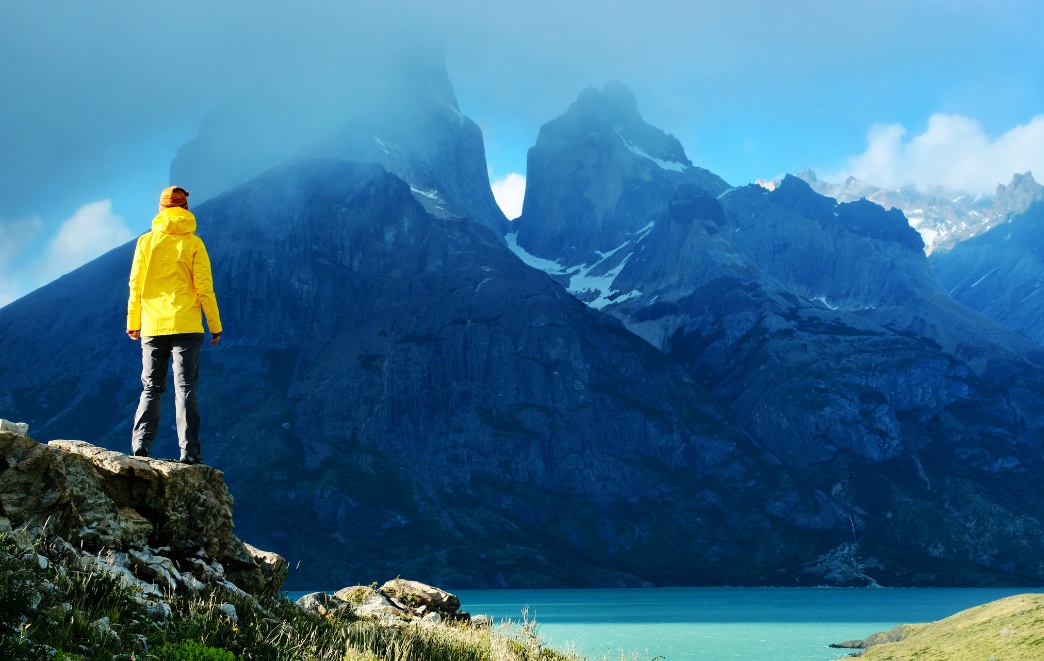
Dotted with volcanoes, lakes and waterfalls, lined by pristine beaches and tropical jungles, Latin American countries are becoming top ecotourism destinations. And now more than ever, travelers are rethinking the way they travel . Conscious travelers like you are opting for memorable experiences in places where they can be immersed in nature while leaving a lasting positive impact on the local environment, community and economy.
Ecotourism in Latin America is easy to discover when you travel with Kuoda, a responsible luxury travel operator. Read on to discover the top ecotourism destinations in Latin America and the life-changing experiences that await.
Why ecotourism travel in Latin America matters
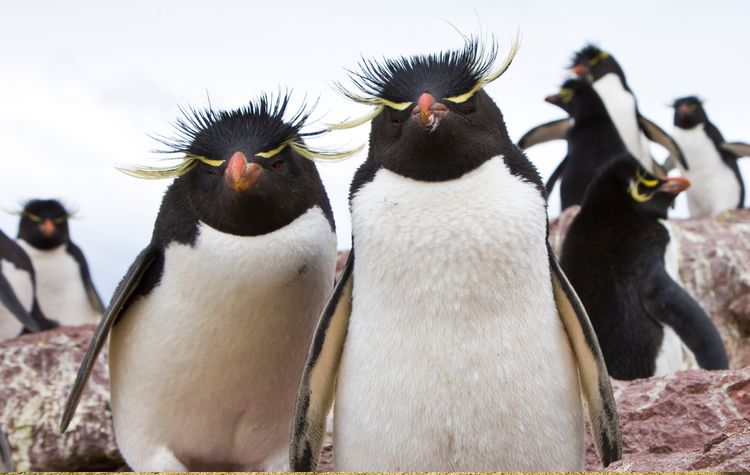
From Machu Picchu in Peru to the remote Galapagos Islands of Ecuador, Latin America is packed with outstanding natural wonders that are apparent on nearly every globetrotter’s travel bucket list. Prior to the ecotourism movement that we see today, many of these hotspots became endangered by overtourism and the negative effects that ensue (loss of native flora and fauna, littering and unfair pay to locals, to name a few). Alarmed by the consequences, Latin American governments and travel companies alike are taking action to preserve their natural and cultural sites.
Progressive travel opportunities rooted in local communities and sustainable practices are becoming widely accessible in Latin America, and Kuoda is eager to incorporate them into your custom-designed travel itinerary. Whether you dream of exploring the depths of the Amazon jungle, the rich Pacific coast, the towering Andes and all that lies in between, here are the top ecotourism destinations in Latin America to inspire your next trip.
Destinations
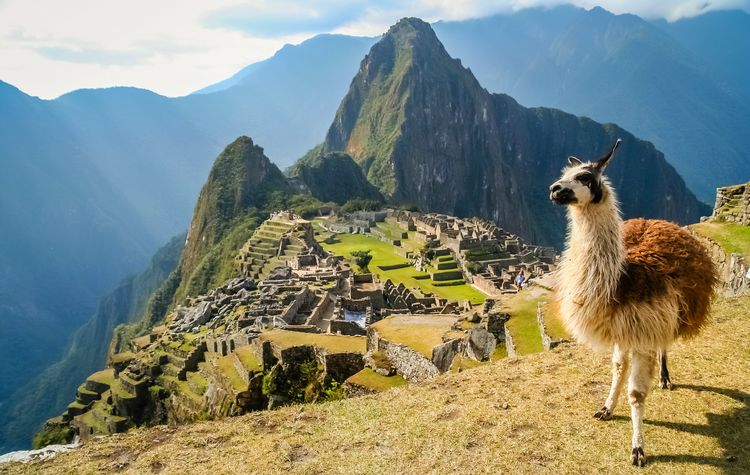
Before the national culinary boom hit, Peru’s claim to fame was the iconic Inca citadel, Machu Picchu. Before the pandemic, the 15th-century archeological site used to see upwards of 4,000 tourists a day, pounding upon precious Inca paths; now just over 2,000 visitors are allowed and entry is according to a specific time slot. This reduced number is an obvious way to cut overtourism, but there is plenty more for ecotourists to experience in Peru .
Three of the largest protected rainforest areas can be found in the Peruvian Amazon jungle— the Manu Biosphere Reserve, the Tambopata National Reserve, and the Pacaya-Samiria National Reserve— and yet deforestation remains a critical threat to wildlife and indigenous communities. For this reason, it is crucial that travelers to the Amazon opt for ecotourism. Kuoda can design a Peru travel itinerary that brings you up close to endemic wildlife— be it by kayak or trekking— without disrupting their habitat.
In the jungle as well as the Andean highlands, we can also incorporate community-based tourism on your visit to Peru for a unique opportunity to learn traditional techniques for making pottery and textiles as well as an introduction to medicinal plants.
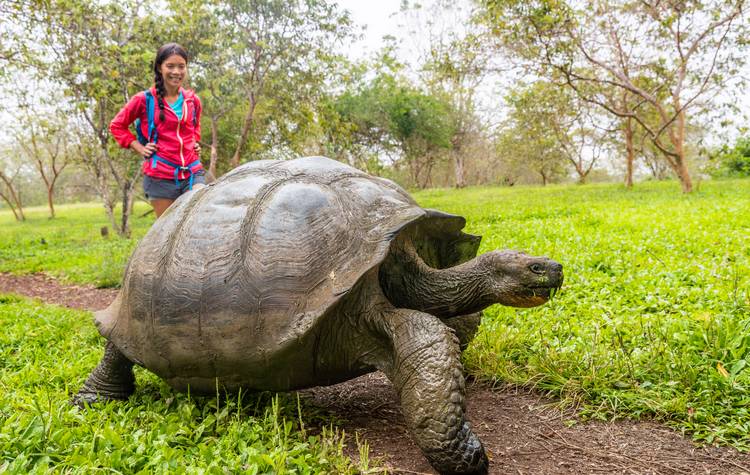
Considered to be one of the most biodiverse countries in the world, mainland Ecuador’s natural bounty will be put at further risk by major mining projects set to launch in the next few years. Just 5 hours north of a major oil extraction site, Ecuador’s Avenue of the Volcanoes amazes travelers with the winding road hugged by a string of cloud-skimming peaks. This impressive and lush landscape is just two hours south of Quito.
Meanwhile, you can support the isolated Galapagos archipelago remain a pristine destination while simultaneously witnessing some of the most unique wildlife on the planet. The Galapagos Islands is a true role model for ecotourism in Latin America as, since 1968, the Ecuadorian government has considered 97% of the archipelago to be a protected national park. That said, ecotourism is vital for combating the rise in overtourism and unsustainable yachts that have brought environmental challenges to the islands.
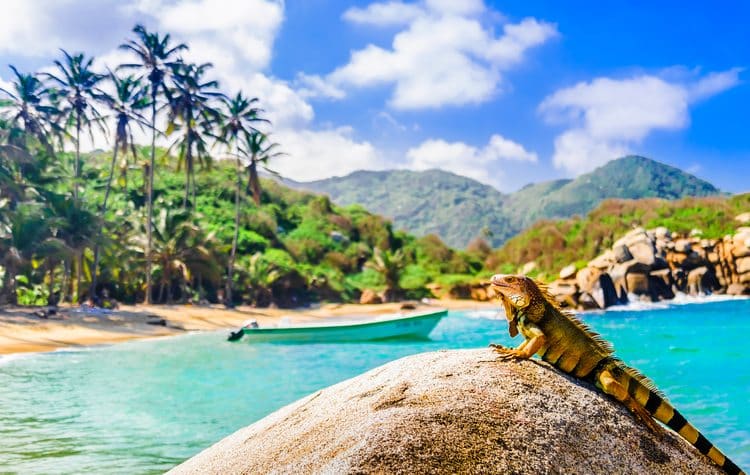
One of the top ecotourism spots in Latin America— if not the world— can be found in the biodiverse nation of Colombia . Tayrona National Park is situated along the northern Caribbean region of Colombia and is renowned for its tropical rainforest, white sand beaches and coastal lagoons. Though it can be visited as a day trip, Tayrona has become a favorite amongst slow travelers as it promotes overnight stays at the park’s campsite.
Despite hosting over 50 national parks, Colombia faces major environmental threats that include massive deforestation, mining and sprawling urban areas that are encroaching on natural landscapes. As a result, Colombia’s Ministry of Environment and Sustainable Development announced some of the most ambitious environmental goals in the world in 2022: to cut greenhouse gas emissions by over 50%; achieve zero deforestation by 2030; achieve carbon neutrality by 2050.
Support the collective deforestation efforts of conscious cattle ranchers, unions and leading Colombian chefs on a private wine and cheese tasting tour in Caquetá. Located in the Amazonas region, Caquetá is rich in exotic flora and fauna and the friendly locals are a reflection of this wealth. You can also get your hands dirty by helping local initiates reforest parks. Simply ask your Kuoda travel expert!
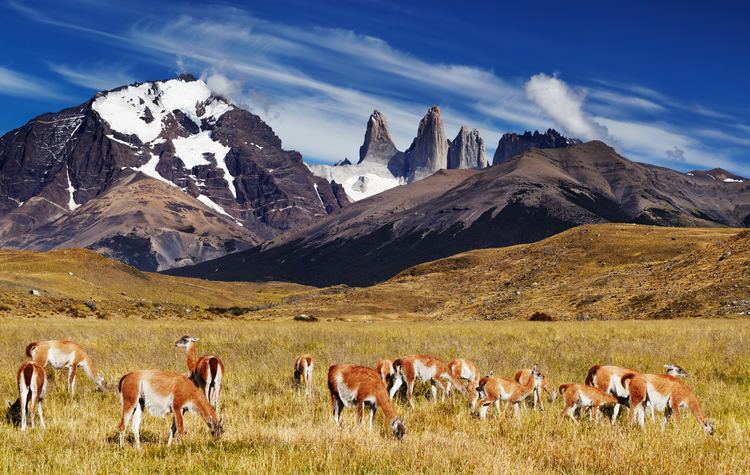
Though far smaller than that of Argentina’s, Chile’s portion of Patagonia (which measures just 10% of this breathtaking region) is a wild destination that can be experienced on a bespoke ecotourism itinerary designed by Kuoda. The famed Torres del Paine National Park is home to towering peaks, expansive pampas and ice fields the size of Hawaii. It is a precious and pristine corner of the world that small companies like EcoCamp Patagonia are preserving thanks to the implementation of green energy and sustainable practices within their luxury domes.
After a few days of falling asleep beneath star-studded skies and waking to crisp air and sightings of frolicking guanacos (of the camelid family), ecotourists in Chile may want to head to one of the most remote places in the world, Rapa Nui. More commonly referred to as Easter Island, Rapa Nui is so small that travelers can navigate the island by bike. Snap a picture of the mammoth stone figures and remnants of a complex society, moai, then peddle your way to nearby pink sand beaches and witness one of the most picture-perfect sunsets on our planet.
Expansive petroglyphs, volcano hikes and superb scuba diving opportunities abound in this speck of an island, and at Kuoda we can link you with a local guide to get the most out of your sustainable Easter Island journey.

Head deep into the wilderness in Argentina’s largest national park, Los Glaciares. With a cozy base in El Calafate, you can spend days exploring the ice caps, including the world-renowned Perito Moreno. Hop over to the Nahuel National Park, also in Patagonia, and to take in the breathtaking lakes followed by a stay in charming Bariloche. Surrounded by the national park, Bariloche offers visitors the chance to kayak, horseback ride or mountain bike.
Even further south— to the ‘end of the world,’ as some might say— ecotourists should not miss the opportunity to discover the Tierra del Fuego National Park. The dramatic coastline is ideal for slow travelers and is often the jumping-off point for Antarctic cruises.
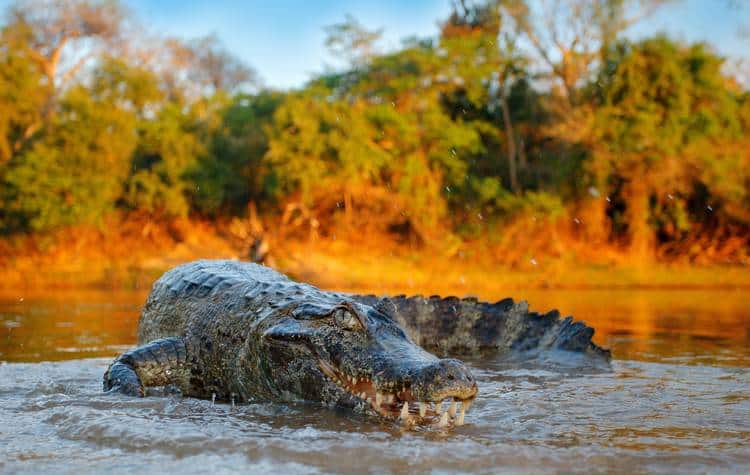
Did you know that 15% of Bolivia is considered protected natural territory? Nevertheless, oil companies and illegal loggers pose a threat for the beautiful landscapes in Bolivia. To avoid adding to its destruction, socially responsible touring can be practiced all around Bolivia. For our ecotourism adventure, let’s start in eastern Bolivia, in the state of Santa Cruz.
Head to the eye-catching colonial town of Samaipata to walk a portion of the Che Guevara Trail. Nearby, in the foothills of the Andes, is the pre-Columbian fort, El Fuerte, which is considered a UNESCO World Heritage Site.
Heading further east, ecotourists will discover Bolivia’s Pantanal, the world’s largest wetland area. While shared with Brazil and Paraguay, the Bolivia portion of the Pantanal is considered to be the best-preserved of the 496,000 square-kilometer marshland. Accompanied by a responsible guide, you can navigate rivers and lagoons to get an up-close look at capybaras and alligators. Be sure to bring your binoculars to watch amazing aquatic birds soar above!
The Kuoda Difference
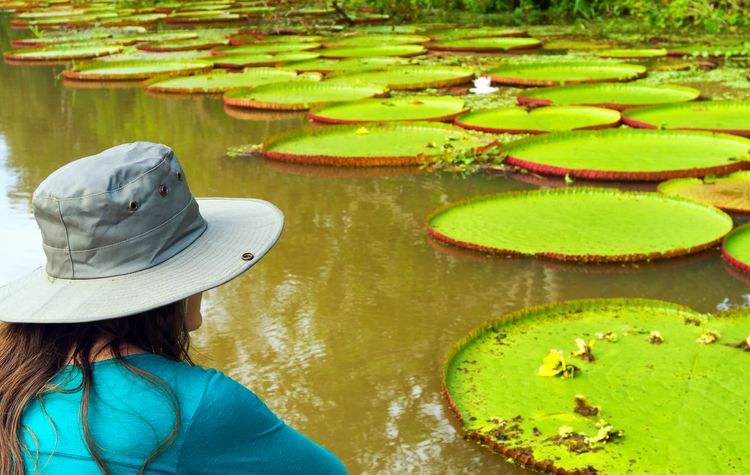
Though ecotourism is increasingly important as we live in an age of constant global environmental threats, finding responsible and sustainable guides, lodges and activities is not so easy. Kuoda travel designers can create a personalized travel itinerary that allows you to experience the best of South America that will positively impact local communities and the environment.
As a responsible tour operator, Kuoda is committed to your needs as a traveler and a conscious member of the global community. Contact us today to begin planning!
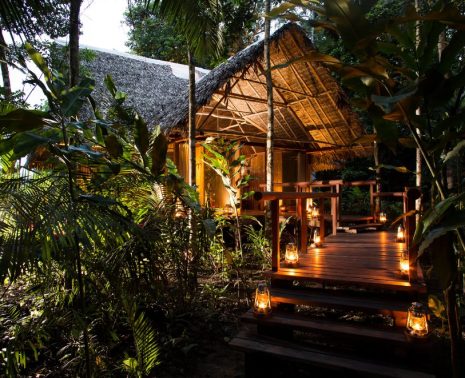
4 Amazon Eco Lodges To Visit In South America’s Rainforest
As travelers become more conscious of their environmental footprint, more sustainable travel opportunities are...

A Guide To Visa Requirements To South America With An American Passport
A luxury vacation to South America means leaving the travel planning to the experts and enjoying a personali...

Meet The Six Safe South American Destinations To Get Back Into International Travel
Are we itching to get out and see the world again, or what? It probably goes without saying that we are defini...
BROWSE THROUGH SAMPLE
Signature itineraries, adventurous mountain hikes, luxurious river cruises, or leisurely horseback rides through the countryside..
Every journey is uniquely handcrafted by Kuoda’s expert travel designers to your desire. Browse through a few sample itineraries below to get a preview of what your custom vacation to South America could look like.

THE AMAZON & MACHU PICCHU 10D / 9N
Discover Peru’s most bucket-list-worthy destinations. Explore a blend of magnificent, unspoiled nature and fascinating historic…

SIGNATURE PERU & BEYOND 9D / 8N
Embrace the once-in-a-lifetime opportunity to explore the most incredible destinations in a luxury tour of Peru. Walk on sacred grounds…

MACHU PICCHU LUXURY TOUR 8D / 7N
Masters of farming, engineering geniuses, and creators of a religion that combined features of animism and nature worship…

IDB Invest promotes the reactivation of sustainable tourism in Latin America and the Caribbean with a $50 million investment in Selina
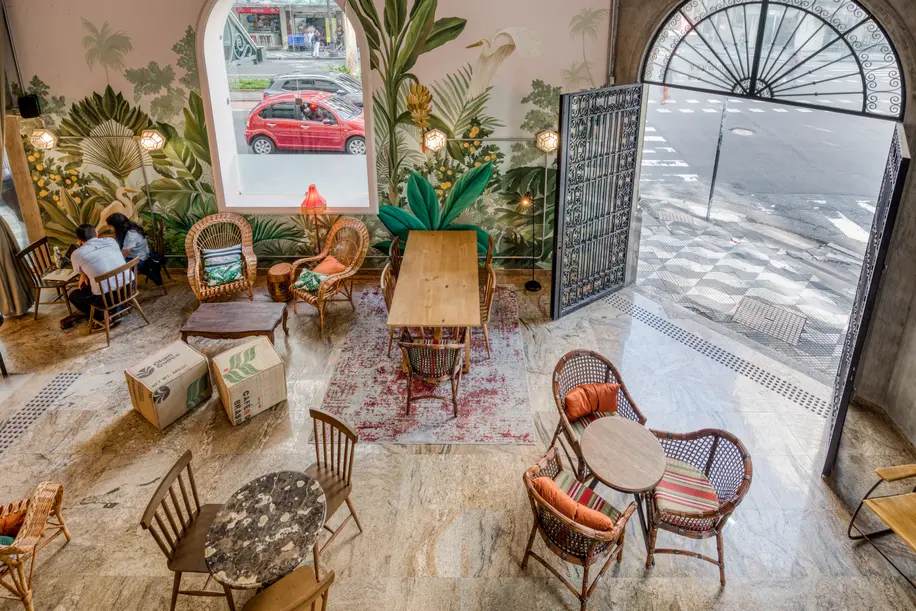
IDB Invest, a member of the IDB Group, provided a $50 million mezzanine facility for Selina, a global chain of lifestyle hotels, to support the continuity of its expansion plans in Latin America and the Caribbean.
IDB Invest’s financing, which includes funds mobilized from Blue like an Orange Sustainable Capital, will allow Selina to enhance its liquidity during the COVID-19 pandemic, expand its geographic presence in Latin America and the Caribbean, and incorporate innovative concepts and amenities across its property portfolio. Tourism is a major contributor to economies and features high development income and in the context of the pandemic, tourism companies require liquidity to embrace the gradual recovery of the sector.
Selina generates employment opportunities for local artisans, offers training to vulnerable groups, and promotes the inclusion of micro, small and medium-sized enterprises into its value chain. The global chain operates 80 lifestyle hotels worldwide, 60 of those in 12 countries in Latin America and the Caribbean. Its business model consists of generating a more efficient use of spac es by converting underperforming properties into modern hotels, that feature a mix of private and communal accommodations, dedicated co-working areas and locally curated food and beverage concepts.
Each property is developed using recycled or up-cycled materials for construction and decoration and several properties are in rural areas, that had limited international tourism prior to Selina’s entrance. The company has adapted to the COVID-19 crisis by being focused on more efficient operations, longer-term stays and its newly launched subscription model.
IDB Invest’s mezzanine financing consists of a $35 million loan from IDB Invest resources and the mobilization of a $15 million B-Loan from Blue Like an Orange Sustainable Capital. This is the third joint operation between the two institutions, as part of a co-financing framework agreement to catalyze investments with high-development impact in the region. The transaction also serves as a reference on how to model and structure other similar tourism deals across the region’s fast-growing lifestyle accommodation segment.
Through this transaction, IDB Invest demonstrates its commitment to reactivating sustainable tourism across the region. In the context of the COVID-19 crisis, the recovery of tourism destinations and local communities will be supported by lodging operators like Selina, capable of attracting so-called “digital nomads” and recognizing the likely changes in geographic flexibility for workers post-pandemic.
This operation potentially contributes to five of the United Nations Sustainable Development Goals: Quality Education (SDG 4), Decent Work and Economic Growth (SDG 8), Responsible Consumption and Production (SDG 12), Life Below Water (SDG 14), and Partnerships for the Goals (SDG 17).
About IDB Invest IDB Invest , a member of the Inter-American Development Bank Group (IDB Group), is a multilateral development bank committed to promoting the economic development of its member countries in Latin America and the Caribbean through the private sector. IDB Invest finances sustainable companies and projects to achieve financial results and maximize economic, social and environmental development in the region. With a portfolio of $13.1 billion in assets under management and 385 clients in 25 countries, IDB Invest provides innovative financial solutions and advisory services that meet the needs of its clients in a variety of industries.
About Blue like an Orange Sustainable Capital Blue like an Orange Sustainable Capital seeks opportunities to lend to companies and projects that deliver both strong risk-adjusted returns and positive social impact in support of the UN's Sustainable Development Goals. Blue like an Orange Sustainable Capital focuses primarily on Sustainable infrastructure & Technology Enabled Services, Social Infrastructure (Healthcare and Education) & Agriculture and Access to Finance. The Company strives for sustainable development outcomes to foster inclusive and sustainable growth without a trade-off with respect to market level rates of financial returns. Blue like an Orange Sustainable Capital's founding partners are Bertrand Badré, Amer Baig, Suprotik Basu, Rashad Kaldany and Emmanuelle Yannakis.
About Selina Selina is one of the world's fastest-growing hospitality brands, blending beautifully designed accommodations with coworking, recreation, wellness, and local experiences. Custom-built for today's nomadic traveler, Selina provides guests with a global infrastructure to seamlessly travel and work abroad. Founded in Latin America in 2015, each Selina property is designed in partnership with local artists, creators, and tastemakers, breathing new life into existing buildings in interesting locations worldwide--from urban cities to remote beaches and jungles. Selina currently operates 80 locations in 19 countries throughout Latin America, the USA, and Europe.
- Election 2024
- Entertainment
- Newsletters
- Photography
- Personal Finance
- AP Investigations
- AP Buyline Personal Finance
- AP Buyline Shopping
- Press Releases
- Israel-Hamas War
- Russia-Ukraine War
- Global elections
- Asia Pacific
- Latin America
- Middle East
- Election Results
- Delegate Tracker
- AP & Elections
- Auto Racing
- 2024 Paris Olympic Games
- Movie reviews
- Book reviews
- Personal finance
- Financial Markets
- Business Highlights
- Financial wellness
- Artificial Intelligence
- Social Media
Britain’s Prince Harry formally confirms he is now a US resident
FILE - Britain’s Prince Harry, the Duke of Sussex, waves during the Formula One U.S. Grand Prix auto race at Circuit of the Americas, on Oct. 22, 2023, in Austin, Texas. Prince Harry, the son of King Charles III and fifth in line to the British throne, has formally confirmed his is now a U.S. resident. Four years after Harry and his American wife, Meghan, decamped to a villa on the Southern California coast, a travel company he controls filed paperwork informing British authorities that he has moved and is now “usually resident” in the United States. (AP Photo/Nick Didlick, File)
- Copy Link copied
LONDON (AP) — Prince Harry, the son of King Charles III and fifth in line to the British throne, has formally confirmed he is now a U.S. resident.
Four years after Harry and his American wife, Meghan, the Duchess of Sussex, decamped to a villa in Southern California, a travel company he controls filed paperwork this week informing British authorities that he has moved and is now “usually resident” in the United States.
The formal acknowledgment underscores the prince’s increasing estrangement from Britain, after he and Meghan walked away from royal duties to pursue lucrative media deals in America. Since then, Harry has repeatedly criticized the royal family, including allegations of unconscious racism that were included in a Netflix series and the prince’s autobiography, “Spare.”
The paperwork was filed by Travalyst Ltd, a company at least 75% owned by Harry and which was founded in 2020 to “to promote global awareness of the importance of sustainable tourism.” The documentation was received Monday by Companies House, the government agency that oversees the incorporation of U.K. companies.
The filing further separates Harry from his role as one of the king’s counselors of state — members of the royal family who can be deputized to carry out the duties of the monarch if he is unwell or out of the country.
While Harry formally remains a counselor of state, the crown informed Parliament in 2022 that “in practice” only working members of the royal family would be called upon to fill in for the monarch.
Although Harry and Meghan, also known as the Duke and Duchess of Sussex, have put down roots in the wealthy enclave of Montecito, where they are raising their young son and daughter, Harry is also facing scrutiny about his U.S. residency.
The Heritage Foundation, a conservative think tank, has questioned the Department of Homeland Security’s decision to grant Harry a U.S. visa following admissions of drug use that were included in “Spare.”
The foundation, which has asked a judge to force the department to release Harry’s immigration file, argues that the prince either lied on his visa application or was given special treatment because a history of drug use would normally disqualify an applicant from being granted a visa.

IMAGES
VIDEO
COMMENTS
The country's long-standing National Social Tourism Plan speaks to the country's ambitions for fostering inclusion and sustainability, acting as the major recovery drivers post-pandemic. Sustainable Travel Index - Latin America Countries, Rank Position 2020. Source: Euromonitor International. Mexico - long, winding road ahead
The World Tourism Organization (UNWTO) and CAF, the Development Bank of Latin America, have signed an MOU to strengthen their collaboration to accelerate tourism development through investments. Data suggests that global foreign direct investments (FDI) into tourism plummeted by almost 74% in 2020, compared to 2019, putting an end to a period ...
FOSTERING SUSTAINABLE TOURISM IN LATIN AMERICA 5 Latin America Program Tourism and GDP In economic terms, the travel and tourism sector is a dynamic one, having surpassed the overall growth of the global economy. In 2017, for example, growth in global output was approximately 3 percent, however, the tourism industry worldwide grew at 4.6 per-
The summary, with the Decalogue for the Responsible Recovery of Sustainable Tourism in Mexico and Latin America, provides decision makers in the tourism sector with ten lines of action, but also some references on how to make building back better in the tourism sector a reality. It invites the entire value chain of the sector including ...
Smart Take | Earth Day 2024 Calls for Planet Over Plastics! Fostering Sustainable Tourism in Latin America (No. 39) The coronavirus pandemic has upended the travel, tourism, and hospitality industries worldwide; these sectors face steep and in some cases catastrophic declines. In a new report published by the Latin American Program and the ...
The aim of the initiative "Good practices and recommendations to mitigate the impact of the COVID-19 pandemic and sustainably transform tourism in Latin America and the Caribbean and the European Union" - a cycle of five digital and hybrid events held from September to December 2021, was to address challenges and opportunities associated ...
investments for sustainable tourism For some areas in Latin America and the Caribbean, tourism is a crucial sector, as it is the main source of investment and foreign exchange. Tourism in this region is highly dependent on its natural capital, which is being affected by different pressures, generating a significant degree of vulnerability for the
Promoting regional cooperation for streamlining sustainable tourism investment mechanisms, through economic recovery and diversification instruments with multiplier effects. ... In January 2023, UNWTO and the Development Bank of Latin America (CAF) announced a new partnership to promote and retain investment in tourism across the Latin American ...
The World Bank's Latin American Tourism Beam and The Responsible Tourism En Breve Series. In 2007 the World Bank's Department of Sustainable Development for Latin America created a "beam" to reach across its sectors, to share experiences and to coordinate eforts related to tourism. Besides documenting and promoting the multi-sector ...
The MIF will seek proposals in several categories including ones that are related to tourism and climate change; information technology and market access; and the development of sustainable tourism in the Caribbean. "Latin America and the Caribbean is one of world's most culturally and environmentally diverse,'' said Santiago Soler, who ...
The Wilson Center's Latin American Program and the Vidanta Foundation launch a call for applications for a six-month residential fellowship in Washington, D.C., to conduct research and propose solutions for "Fostering Sustainable Tourism Development in Latin America and the Caribbean." The residential fellowship will begin in September 2018.
Promote the certification of sustainable tourism businesses based on internationally agreed standards, as a tool to . mainstream sustainable practices, reduce the negative impact on . the environment, meet national sustainable development goals and encourage more sustainable consumer choices and behaviour. CITIES. Sustainable . c. onstruction
Latin America is a treasure trove of ecotourism destinations, offering incredible natural beauty, rich biodiversity, and a commitment to sustainable practices. From the dense jungles of Costa Rica to the majestic glaciers of Argentina, this diverse region has something to offer for every eco-conscious traveler.
February 16, 2023. The Development Bank of Latin America and the Caribbean (CAF) is embarking on a new programme to promote sustainable and regenerative tourism development and to strengthen regional integration and regional cooperation through tourism. CAF, which recently opened its Regional Office for the Caribbean in Port-of-Spain, Trinidad ...
Sustainable travel. At Journey Latin America, sustainable travel and the desire to be a responsible business has always been in our DNA: our passion for the people and places we visit underlies everything we do, which is why we strive to have a positive social and environmental impact at home, in the regions that we operate and for the planet.
South America is one of the planet's prime ecotourism destinations. Many of the isolated nature lodges and tour operators around the country are pioneers and dedicated professionals in the ecotourism and sustainable tourism field. Many other hotels, lodges, and tour operators are simply "green-washing," using the terms "eco" and "sustainable ...
Latin America is leading the way when it comes to eco‑tourism and sustainable development in the travel industry, particularly because Latin America is rich in natural attractions that need protection. Travel companies and tourism boards tend to focus on maintaining biodiversity for international visitors, but are taking steps to protect ...
Check out these four innovations "made in" Latin America, and the enthusiastic young leaders behind them. A treasure inside avocados. Scott Munguía produces bioplastics from avocado seeds. This young Mexican chemical engineer discovered in 2011 that the avocado seed contains a biopolymer similar to the one present in corn, which is used to ...
Our Commitment to Sustainable Travel. 15 April 2021. At Journey Latin America, we love the continent that we send our travellers to and we always endeavour to protect its incredible places and people. For us, sustainable tourism is all about providing authentic experiences, developing worldwide relationships and bolstering the survival of ...
In parallel with this event, the workshop 'Entrepreneurship and Cultural Heritage Tourism: Exploring Opportunities and Challenges at World Heritage properties' took place, with creative entrepreneurs from 6 Caribbean countries, aiming to raise awareness and strengthen their capacities for the conservation and promotion of these sites, on which their businesses largely depend.
Revealing the Challenge: The relevance of this Challenge is highlighted by recognizing tourism as an essential driving force in the global economy and, more specifically, in the UN Tourism Region of the Americas, including Latin America and the Caribbean. During the period from January to July 2023, arrivals to the Americas reached 87% of 2019 ...
Journal of Sustainable Tourism Volume 26, 2018 - Issue 9. Submit an article Journal homepage. 831 Views 11 ... animals outside of formal captive environments across Latin America. Using information provided online via TripAdvisor, we found this type of tourism was occurring across the region (advertised on 249 wildlife tourist attraction ...
Colombia. One of the top ecotourism spots in Latin America— if not the world— can be found in the biodiverse nation of Colombia. Tayrona National Park is situated along the northern Caribbean region of Colombia and is renowned for its tropical rainforest, white sand beaches and coastal lagoons. Though it can be visited as a day trip ...
IDB Invest, a member of the IDB Group, provided a $50 million mezzanine facility for Selina, a global chain of lifestyle hotels, to support the continuity of its expansion plans in Latin America and the Caribbean.. IDB Invest's financing, which includes funds mobilized from Blue like an Orange Sustainable Capital, will allow Selina to enhance its liquidity during the COVID-19 pandemic ...
Our Commitment to Sustainable Travel. 15 April 2021. At Journey Latin America, we love the continent that we send our travellers to and we always endeavour to protect its incredible places and people. For us, sustainable tourism is all about providing authentic experiences, developing worldwide relationships and bolstering the survival of ...
FAO delivered an official FAO statement at the Forum of the Countries of Latin America and the Caribbean on Sustainable Development 2024 discussion on" Advancing the priorities of Caribbean Small Island Developing States towards achieving the 2030 Agenda ".. In advancing the priorities of Caribbean Small Island Developing States (SIDS) towards achieving the 2030 Agenda, it is crucial to ...
The tourism industry in Latin America represents approximately 8.5 percent of regional GDP and is expected to grow in future years. ... March 21 at 9:00 a.m. at the Wilson Center to discuss these issues with some of the leading voices on sustainable tourism development and its links to conservation. Opening Remarks . Anders Beal Program ...
The paperwork was filed by Travalyst Ltd, a company at least 75% owned by Harry and which was founded in 2020 to "to promote global awareness of the importance of sustainable tourism." The documentation was received Monday by Companies House, the government agency that oversees the incorporation of U.K. companies.